
WOMEN MATTERS
ESPLORING RESILIENCE
YEAR 2019 EPISODE 1 +2
January 15th and February 19th at 6 PM CEST/ 9 AM PT
Exploring Resilience
ABOUT THESE EPISODES
Monia recommended to Heidi the book by Noah Yuval Harari “21 lessons for the 21st century“. It is an astonishing and frightening book for the consequences which are outlined as real possibilities for this century. How can we “normal people” possibly face this probable huge change which we have to go through, not only once, but continuously. Harari’s suggestion is to build RESILIENCE. Well, let’s see and talk about it!
After the first conversation on Resilience we felt that there was more to explore, with or without reference to Harari
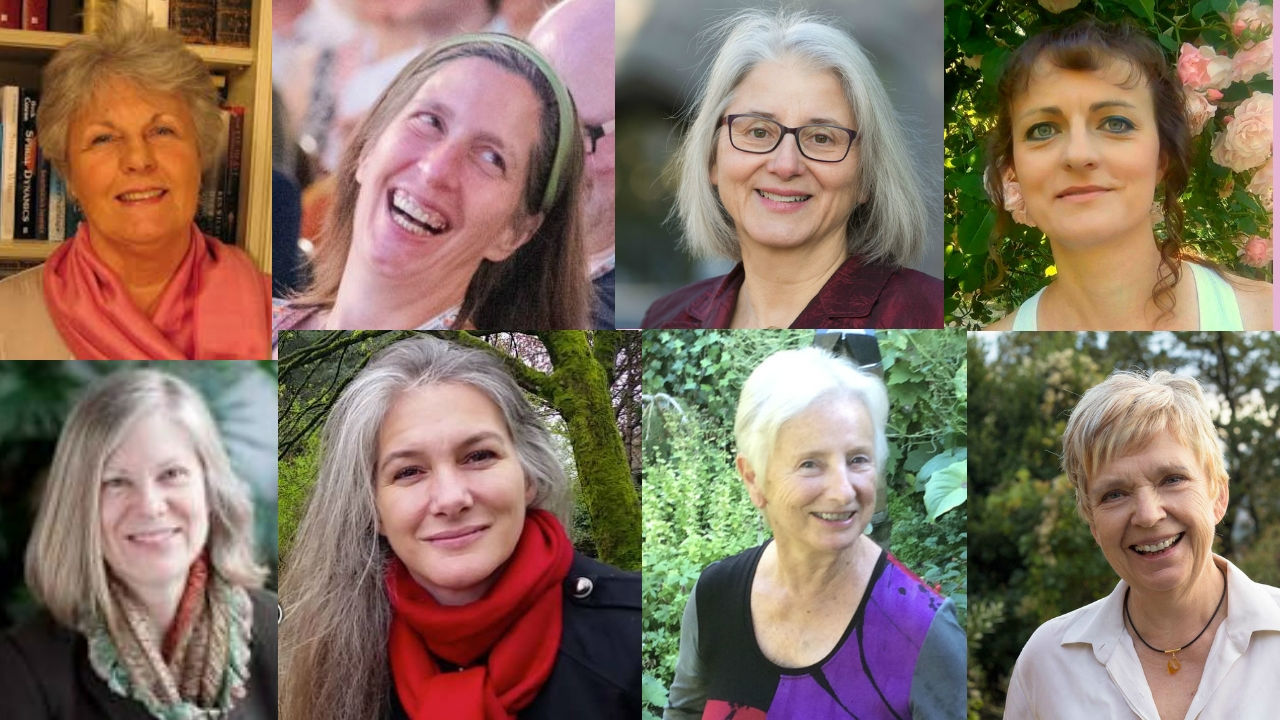
RESILIENCE #1 Streamed LIVE HERE on January 15th 2019
Women Matters Jan 2019
0:00 Heidi’s Intro
1:13 Tech Advice to a new member Dorothy Stern-Kucha from USA. Then she introduces herself.
3:10 Monia Fruehwirth from Austria
3:58 Tammy Lea Meyer from Canada
5:05 Elizabeth Debold, American in Germany
6:16 Hanna Huendorf from Germany
8:25 Viktoria Duda from Hungary
10:53 Gertraud Wegst from Germany/ Austria
11:00 Announcement of the Wisdom Factory event with Gertraud
12:35 Slowly introducing RESILIENCE, the topic. Heidi shares her understanding and how the she came to choose the topic: by reading Yuval Harari. Below is posted the paper about a Viennese group on resilience (In German and translated into English). Heidi laying out the path of inquiry into resilience.
14:15 Monia starts with her tech problem resilience, then she already uses the points of the paper. Awareness of my essence, resources and capabilities… up to point 4.
16:20 Heidi asks the others just to talk from their experience, leave the points of the paper for later.
13.34 Dorothy: Her daughter in Law has taught her resilience: stay grounded and centered and in the present moment as often as possible, keep going, more fluid, will keep changing, my response more mature, kind etc. Interested in why some people overcome challenges well while others crash. Book: “Playing a poor hand well”: A child needs at least one person to be believe in them and be present with them, to be able to find their strength.
19:10 Hanna: She thinks Heidi has demonstrated a lot of resilience. Resilience: You feel the grief, and are aware, but giving up is no option. Where is the source of resilience. The story of her Tibetan teachers. Sometimes people with incredible difficulty are more compassionate than those for whom life goes easy. Suffering > resilience.
22:47 Tammy: Meeting the present moment and being self-resourced.
23:35 Elizabeth: Resilience was a huge topic in the 90ies in psychology. Experiments on resilience. Harari is hair raisingly pessimistic. Where would we find the courage and strength to live. Essence of resilience: Life force. Normal problem solving mood might not be the best thing to meet the shattering things. How to access the will of life in the face of huge problems. It is a surprise rather than something to cultivate at will. The force is stronger than all of me.
28:03 Viktoria: she likes the mystery. From her experience the question why children with difficult lives become so different in adulthood. In past life regression she notices that people have memories inside of them of a higher level, a memory of a vision. The metaphor of the fish. If the caring adult has the vision that can be the glimpse the child receives to overcome the difficulties. Higher reality, mystical turning point.
31:30 Gertraud resonating with Viktoria. G shares her experience from the mid-life school. What happens during pregnancy leads to more resilient than those whose time in the belly was super harmonious. Salutogenesis by Antonovsky, worked with survivors of the Holocaust and their different ways of being afterwards. What makes those few healthy? They had some kind of understanding of what was going on and had something to handle it, for instance singing for self empowerment. Believing that there is some purpose beyond my humble being = mystery.
35:50 Heartmath: Solving problems with the brain and against the heart is impossible.
36:20 Monia: different levels of talking about resilience, different levels of challenges. Live threatening is the higher level. People who have experienced mystical moments and who are not resilient: she thinks that is an offense to the Universe.
37:30 Heidi: finding meaning in life (VIktor Frankl). Harari in rational deconstructive mindset. How is resilience connected with the personality type? How do we create meaning in our lives, even knowing that everything is relative, and how can we then really believe in that? What do you think is creating resilience in us and what do you think we can do to increase it and find meaning?
39:45 gertraud: Body, mind and soul in co-herence
. Mystical experience doesn’t help you in every day life experience. Need some kind of empowerment, purpose beyond
41:20 Actually might be in our DNA. She knows resilient people and those who didn’t, in her own family. It might be already part of who we are and then grow with it in several ways. Abilities and gifts, like a tool we have and can be nurtured. It is distinct when it is there and when it is not.
43:25 Viktoria: important distinction between toughness and resilience. Ability to hold on your own highest past. Example: artist. They need sensitivity, otherwise it is a type of failure. She learned in martial arts to deal with hyper sensitivity by wise teachers as a tool to development. Tai Chi move: fist and hugging hand: toughness and kindness working together: system is most resilience.
46:13 Monia: “Access to resilience” means: a set of tools you can use, in your psyche, body or spiritual? We are not always resilient. Being ready to let go and accept, something changed in her case just here. Accept and be ready to use.
47:50 Elizabeth: “Be ready to use”, might be the other part. You can have the tools but if something in you crushed you don’t pick them up for various possible reasons. How mysterious this is! She talks about her mother and how she handles her diminishing abilities with 90. Life force brings her up again. That’s what the kosmos keep going!
50:30 Heidi adds the resitance and how to let go of it
50:50 Tammy: frozen back at
52:00 talks about her friend’s resilience who lost her husband only last week: consisting in presence and gratitude. She is with her and meeting the present moment. Interplay of meaning and resilience. Orientation to meaning making can allow choosing to response as opposed to react.
53:55 Heidi: Tammy has shown that resilience when she lost her brother a few weeks ago.
54:15 Hanna shares about her mother as a “Steh-auf Frauchen”. European women who have lived through the wars had to develop a lot of resilience. Her mother said, that it doesn’t matter what happens around you, you can still be happy. And fulfilled in the middle of chaos. Trying to imagine the war situation, where people become inventive. We can observe resilience and develop compassion any time if we look around us when seeing people in suffering or happiness. Children should spend time with their grandparents and be with the ageing and dying process. A challenge and gift, where we can learn resilience. As her mom met the increasing disability. Resilient and autonomy together.
1:00:20 Heidi: a down to earth conversation, as opposed to Harari’s book.
Elizabeth sais that he is a meditator: Many people meditate IN THEIR OWN HEAD!
1:00:30 Monia: about the meditation practice. She got depressed by reading the book, then went back to her resilience thinking: Maybe the female way is different?
1:02:00 Heidi: It is important to read that as a help to find out our own vision.
1:02:40 Hanna introduces Lama Bruno whom she took in her first long retreat: He has done a 3 year retreat, too! Respect somebody for having sat in a room for 3 years! = Meditation for long time doesn’t really mean anything. But she finds Gyanca retreats valuable. She talks a little about Buddhism views. “Everything is an illusion” makes it more real, as you are free to do anything, why not build a beautiful world?
1:05:55 Monia: not call it illusion, but “construct”, people can get along better
1:06:15 Heidi: agrees, Gertraud would like to continue the conversation as we are not complete, also go more into Harari’s points.
1:07:00 Heidi’s closing.
February 19th, 2019: RESILIENCE #2
Women Matters Febr. 2019
0:00 Intro Heidi – reference to #1 of the conversation on RESILIENCE
1:30 Dorothy tells what has happened to Viktoria as a huge example of resilience.
Losing her outer sanctuary will focus her to her inner sanctuary. (short interuption)
4:55 Elizabeth:Amazing example of resilience. A delicate line to respond someone who we think might be in trauma. Our need to help can support victimzation. Viktoria is saying: “I am not victim”. We live in a culture of victimization: positive: wanting to care, negative: debilitating. keeps us pathetic. E. mentions the rubble women: what is possible now?
8:15 Heidi: Enneatype 4 > victim is easy, you do things when you need to do them
Viktoria had said: difference between toughness and resilience
10:10 Monia: She gets into action. Is it the way to deal and get things moving again? Fire: is she insured? Resilience matters, not the money.
11:35 Monia about victimisation: she didn’t feel like that after her surgery and just
12:10 Heidi asks Elizabeth: Is it specific for women? Women are SURVIVORS Tells a story from a british comic: “The women wouldn’t let go”. Is our survival nature resilience?
14:40 E talks about young women working in Porn industry: is this making compromise resilience or something else
15:12 Heidi: disconnect from body, dissociation is a long story of women. Maybe it is biological?
16:25 Dorothy: response teams after crisis and trauma: the “support” often interferes with the own process of the victims. Resilience: “Who am I?”, self confidence, what it takes inside. Resilience has a huge complexity, not necessarily the rapid response. Healing also is experiencing the loss, fear, sadness! An emotional journey, immediate action might be a coping mechanism.
19:35 Monia goes back to “women in porn”. There is much more demand of men on that market? In Austria prostitution in “Laufhäuser”, more female prostitution, one of the easiest way to make money. Where does resilience starts and being incornered ends? Prostitutes from other countries were cheated by promised a right job.
23:00 State interferes with canabis, Heidi: men fear sexual relationships for fear of being accused of abuse: it may increase the demand for prostituiton?
24:10 Elizabeth: referring to #metoo. She thinks it hasn’t affected the lives of most people. Men mentoring young women.
25:20 Heidi had heard that in America men are very cautious in the workplace.
26:00 Monia: not a topic for her daughters and granddaughters.
27:08 Resilience and meaning:
E: Ted talk: what makes someone successful in any context: grit (related to resilience), meaning, ability to persevere despite setbacks for a long term vision.
29:10 Monia: perseverance = stubbornness?
30:00 H: can meaning be found by building resilience? Are we born with the capacity of resilience or can we build it?
30:25 Monia: Meaning depends on what narrative you have. Meaning = just a story (coming back to Harari) D: meaning is attached to value, what I care about.
32:15 Dorothy: Resilience as a response to drama, big losses, recovery from something difficult, dealing with the impact
34:10 After the war no therapeutic support for people, still they continued their lives, they reconstructed the nation, they were not a victim
35:14-35:46 INTERRUPTION obviously it had been spoken about the Holocaust
Dorothy mentions Monia in this context. Monia still cannot believe that people can do such a thing. Book: “why did they follow him?” Trance-talking to people, maybe.
39:05 E: depression in Europe was not like in the US. Hitler forgave debt – like Trump (not yet). Dulling effect on the psyche. A year old with some disorder
Why do people work with those people? Why don’t they impeach him.
47:25 Heidi: recommend Jordan Peterson’s study of totalitarianism: didn’t say stop at the right time.
E: THis question is going on in USA now: where is the point to say stop? It is not a joke what is going on now. Do we have enough cultural resilience?
43:10 Heid reports Harari who says that today is a completely different situation, but who knows in the future? More a sign of the disruption which needs to come.
44:45 Monia mentions Brexit
45:15 Heidi mentions John Bunzl: the party system will be obsolete. Otto Scharmer talks about the new polarities: not right-left, but open minded and closed minded. Cultural resilience: so far it seems to work
46:30 E: belief in liberal democracy is less strong, also in the political elite. Vaccum in human values, consumption driven, upside down tax cuts in US. She things America doesn’t have much cultural resilience.
48:05 Dorothy: she sees resilience: young people and in small groups all around the world. E: “mycilient” root mushroom is being building.
50:50 Monia talks about the young Austrian chancelor. Protest walk: grandmothers against Right. They are already so solidified in their leftist view that they have no arguments and cannot see that he tries to do things differently. E: asks if he is far right? Monia says he is center., maybe even integrally informed. Mentions the “anti-atomic movement” of the now green party which started out with people from every party. Now the green party has become arrogant, that’s why people move towards the right. The chancelor tries to move to the center. He listens, people are irritated because they are not used that someone listens.
55:16 D: doubts if open-closed minded makes a difference to right-left.Conservative brains are different than liberal brains. Young women are now in congress and our hopes are on them.
57:14 E: talks about a person she knows, how can things be denied which are documented historically. M: refers to Heidi and Otto Scharmer: it is about listening to people and accepting their different opinions. Fighting about politics is a waste of time. She has dear friends from all parties and she brought them together in the Integral Salon in Vienna. People begin to talk to each other. Trying to find common basis. “May we live in interesting times”
1:00:06 Heidi: we have conservative and liberal parts in ourselves. Be open to listen, wanting to understand, instead of ideology.
1:01:20 Dorothy: What is the difference of the resilience work, the Germans who lost the country and had to rebuilt and the victims of the holocaust. What is the difference, nobody was listening to the other. What had the German people to learn and explore and what the jewish people? What was the healing like for German people?
Monia: our parents didn’t talk about that. Talks about her family. Traumatized. Socialist after the war might just have changed sides.
1:04:55 Don Beck: fundamentalist switch sides easily.
Monia: Movie “Herr Karl” with Qualtinger
Heidi: main healing work is up to the next generation, our generation, second generation. The first generation didn’t want to talk, having found a balance in their lives and don’t want to open the pandora’s box.
RESOURCES
Resilienz als Lebenshaltung Das Wiener Resilienzmodell – Systemische Betrachtungen – (Peter Klein und B. Meerwald) “Übersetzt” von Monia Frühwirth
Resilienz
Der menschliche Organismus (GEK-O, Geist, Emotion, Körper – Organismus) ist ein faszinierendes Regelwerk. Scheinbar selbständig, entwickelt er eine Art der Selbstorganisation durch innewohnende Selbstheilungskräfte stets im Sinne der psychoneurobiologischen Homöostase und regeneriert sich selbst.
Bereits in den 1950er Jahren gab es erste Studien zu diesem Thema. Eine berühmte Langzeitstudie ist die von Emmy Werner, einer amerikanischen Entwicklungspsychologin.
Eine weitere wichtige Studie ist die von Maddi Salvatore von der Universität in Chicago. Gemeinsam mit seinem Team untersuchte er in den 1970er Jahren 350 ManagerInnen einer großen amerikanischen Telefongesellschaft.
Emmy Werner und auch Maddi Salvatore haben nicht nach Risikofaktoren für die Persönlichkeit gesucht, sondern haben ihr Augenmerk auf diejenigen gelegt, denen widrige Bedingungen oder auch schlechte Rahmenbedingungen offenbar nicht schaden. Sie suchten nach Faktoren, die diese Gruppe verbinden bzw. gingen folgender Frage nach: „Was führt dazu, dass ein Mensch Niederlagen, Krisen und andere Widrigkeiten gut übersteht?“
7 Schlüsselkompetenzen
Aus diesen Studien konnte folgendes abgeleitet werden: Jeder dritte Mensch verfügt über eine Resilienzkompetenz, die ihn mit dem menschlichen Potenzial ausstattet, belastende Ereignisse und schlechte Rahmenbedingungen gut verkraften zu können. Die Quintessenz dieses menschlichen Potenzials manifestiert sich in sieben Schlüsselkompetenzen:
- Akzeptanz
Akzeptieren Sie was geschehen ist. Nehmen Sie die Chance zur Veränderung wahr. Es braucht die Fähigkeit loszulassen um akzeptieren zu können. „Es ist was es ist“. Das Annehmen von Vergangenem, Aktuellen ist essenziell.
2. Optimismus
Krisen sind zeitlich begrenzt und können überwunden werden. Es braucht Vertrauen, dass es besser wird. Ein prinzipielles Vertrauen in das Leben ist von Vorteil. Die Erkenntnis, dass es möglich ist, Einfluss zu nehmen auf das was in der Zukunft geschehen wird, ist wichtig. Die Erinnerung an schon bewältigte schwierige Situationen kann von großer Hilfe sein.
3. Selbstwirksamkeit
Die Bewusstheit über die eigenen Stärken, Ressourcen, Fähigkeiten und Bedürfnisse, ermöglicht dem Menschen, sein Leben aktiv zu gestalten und zu beeinflussen. Es erlaubt ihm, schwierige Situationen selbstbestimmt zu meistern.
4. Verantwortung
Für das eigene Handeln und für sich persönlich braucht es Verantwortungsübernahme. Weg von der Verantwortung für andere, hin zur Verantwortung für sich selbst und seine Fähigkeiten. Aus eigenen Fehlern lernen und neue Perspektiven einnehmen, ist eine Form der Verantwortungsübernahme.
5. Netzwerkorientierung
Netzwerkorientierung bedingt die Fähigkeit, mit anderen Menschen in Kontakt zu treten. Soziale Fähigkeiten und Kommunikationsfreudigkeit sind von großem Nutzen. Das Erkennen des eigenen Potenzials und der eigenen Schwächen sind Voraussetzung um die Ressourcen des sozialen Umfelds zu identifizieren und zu nutzen. Der Mensch ist ein Wesen der Gemeinschaft.
6. Lösungsorientierung
Herausforderungen sind da um gelöst zu werden. Die Lösung liegt in der Zukunft und der Fokussierung darauf. Innehalten und erkennen um eine Lösung zu finden. Hierfür braucht es Raum und die Möglichkeit, die Lösungsansätze hinterfragen und prüfen zu dürfen. Lösungen müssen nicht sofort parat sein, sie dürfen entstehen.
7. Zukunftsorientierung
Der Blick auf die Möglichkeiten jedes einzelnen Individuums ermöglicht eine Orientierung in die Zukunft. Es befreit aus alten Mustern und persönlichen Komfortzonen. Es ist wichtig, wach und konsequent das Ziel in der Zukunft zu verfolgen, aber auch immer wieder kritisch zu hinterfragen.
Diese sieben Schlüsselfaktoren wirken unterstützend, unsere Resilienz zu stärken und immer weiter auszubauen. So könnten auch alle unangenehmen Erfahrungen als wertvolle Trainingsreize für die Entwicklung von „Resilienzmuskeln” „reframed” oder umgedeutet werden, um dadurch die Kraft des eigenen Geistes für eine positive Selbstinstruktion nutzbar zu machen.
Birgit Meerwald und Peter Klein haben in Ihrer Aufstellungsarbeit zum Buchprojekt integrative Aufstellungsarbeit und Resilienz die Erkenntnis gewonnen, dass es um 2 weitere Schlüsselfaktoren gehen muss:
8. Bewusstsein
Bewusstheit und Bewusstsein sind wesentlich, um in einem Paradigmenwechsel in eine resiliente gesunde Gesellschaft zu gehen. Persönlich entwickelte Menschen, die Bewusstheit über sich erlangen, sind fähig selbst zu entscheiden, für sich einzustehen und sozial verantwortlich zu handeln. 9. Systemklarheit
Klarheit in den diversen Systemen, denen wir angehören, wie Familie, Firma, Freundeskreis, kulturelle Gemeinden, Bildungseinrichtungen uvm. ist essentiell. Wenn der Mensch Klarheit über die unterschiedlichen Systeme hat, kann er auch selbstbestimmt unter verschiedenen Rahmenbedingungen Probleme lösen und angehen. Mitten, verstrickt in einem unklaren System, ist die Lösungsfindung fast unmöglich. Systemklarheit ermöglicht einen freien Blick auf die Herausforderung und gibt die Freiheit, aus einer neuen Perspektive zu handeln.
visit also https://www.wko.at/site/ImpulsPro/Wiener-Resilienz-Model—WRM-2016.html
Integral Systemics – Peter Klein
Translation of the paper into English by Monia Frühwirth
Resilienz als Lebenshaltung Das Wiener Resilienzmodell – Systemische Betrachtungen – (Peter Klein und B. Meerwald)
Resilience
The human organism (mind, emotions, body) is run according to a fascinating system of rules. Apparently independent it develops a kind of self-organisation through intrinsic self-healing powers as defined by psycho-neurobiological homeostasis, and regenerates itself.
Iin the 1950s Emmy Werner, an American developmental psychologist, created a famous long-term survey on resilience..
A further important survey was created by Maddi Slavatore of the University of Chicago. Together with his team he investigated 350 male and female managers of a big American telephone company in the 1970s.
Emmy Werner and Maddi Salvatore did not look for possible risks to the personality, but rather for those qualities that were not affected by adverse conditions as such. They looked for similarities that enabled those people to survive setbacks, defeats, crises and other adversities much better.
Seven Key Competences
In accordance with these studies they deducted that every third person posses resilience competence that provides them with the human potential to cope with stressful experiences and adverse work conditions. The gist of this potential manifests in seven key competences.
- Acceptance
Accept what has happened. Observe the chance for change. You need the ability to let go, disengage, in order to be able to accept. “It is what it is”. Accepting the past and present is essential.
- Optimism
Crises are temporary and can be overcome. Confidence is required that things will improve. Trust in life as a matter of principle is of advantage. Being aware that you can influence what will happen in the future is important. Also remembering difficult situation that have been overcome in the past.
- Self-efficacy
Awareness of your own assets, ressources, abilites and needs allows a person to fashion and influence her life actively and thus cope with difficult situations in a self-determined way.
- Responsibility
To take responsibility for your own actions. Not to assume responsibilty for others, but for oneself and one’s abilites. To learn from your mistakes and to find new perspectives is also a form of taking responsibility.
- Networking oriented
Networking requires to get into contact with others. Social abilities and enjoying communication are of great advantage. To be aware of your own potential and weaknesses accordingly is a requirement to identify and benefit from the resources of your environment. A human being is a sociable being.
- Solution oriented
Challenges require solutions. The solution lies in the future and in focussing. To stop and discern in order to find a solution. This needs space and the possibility to scrutinize and examine possible approaches. Solutions are not available at the ready, but may emerge in their due time.
- Future oriented
To scrutinize the possibilities of each individual allows for an orientation towards the future.
It frees from old habits and patterns and extricates from the personal comfort zone. It is important to pursue the goal in the future wide awake and relentlessly, but also question it again and again.
These seven key competences support the reframing of unpleasant experiences as training devices for developing resilience muscles.
Birgit Meerwald and Peter Klein, Vienna, Austria, have realized through constellation work for their book project on integrative constellation work that two further key competences are required:
- Awareness/ consciousness
The development of awareness and consciousness are essential requirements for a paradigm shift towards a healthy resilient society. Mature persons who have achieved awareness will be able to decide independently, will be responsible for themselves and act in a socially responsible way.
- Clarity regarding the systems we belong to
To achieve clarity regarding the various systems we belong to is essential: our family, company, friends, cultural communities, educational institutions, et cetera. A person who has gained clarity about the different systems, will be able to solve problems within various framework requirements. Ensnared in obscure systems makes it almost impossible to find a solution. Clarity allows for a free view of the challenges and enables to act from a new perpsective.
Source: Birgit Meerwald and Peter Klein, Wiener Resilienz Modell (in German)
January 2019
mf
visit also https://www.wko.at/site/ImpulsPro/Wiener-Resilienz-Model—WRM-2016.html
Integral Systemics – Peter Klein
OUR PRESENT TEAM

Hanna writes
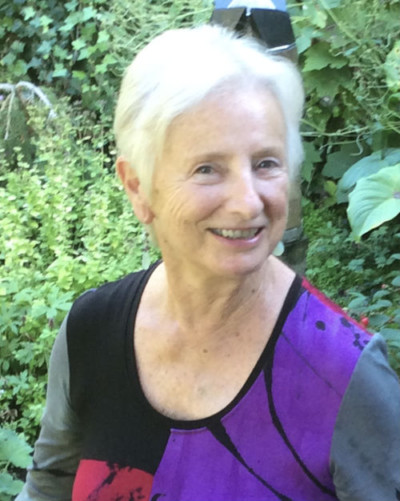
Dorothy has lived for 46 years at the edge of the Pacific Ocean looking out at a horizon which always reminds her that there is no limit to what is possible. She has raised one lovely son and lives with an endlessly creative husband in their hand-built cedar cottage. She has come, via her parents, from Vienna and has lived in New York City, Costa Rica, Mexico and now in Oregon.
Her youthful goals included becoming an anthropologist or civil rights lawyer but when her father informed her that, “there are only two nice professions for a woman—nurse or teacher”, she became a teacher instead. Soon she realized that teaching was not her passion and entered graduate school and satisfied her love of working with people committed to living the examined life. She became a Clinical Social Worker. To this day she works with people who are looking toward their own horizons.
More on her personal page
RECOMMENDED BOOKS
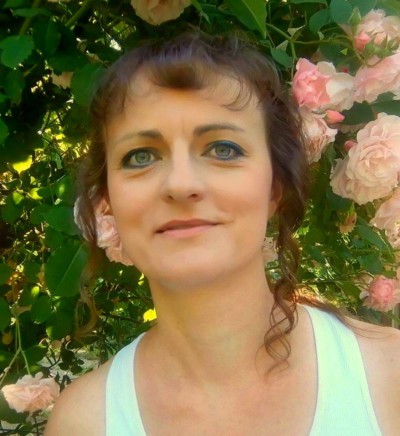
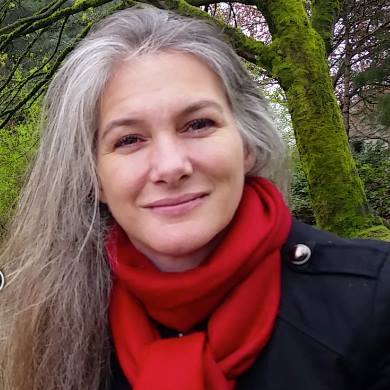
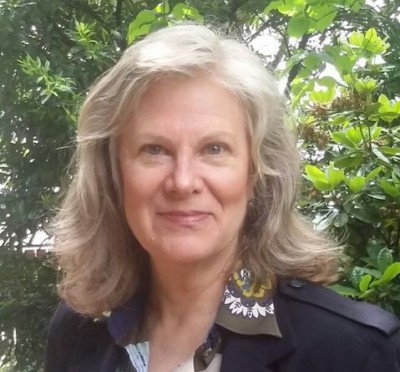
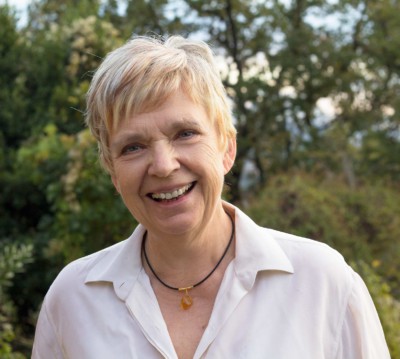
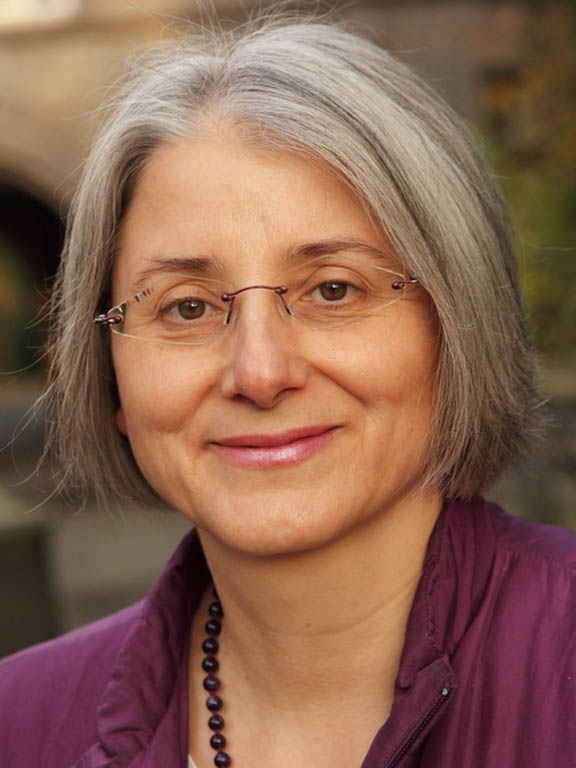
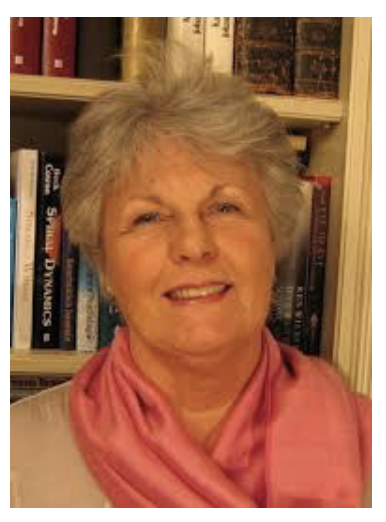




Leave A Comment